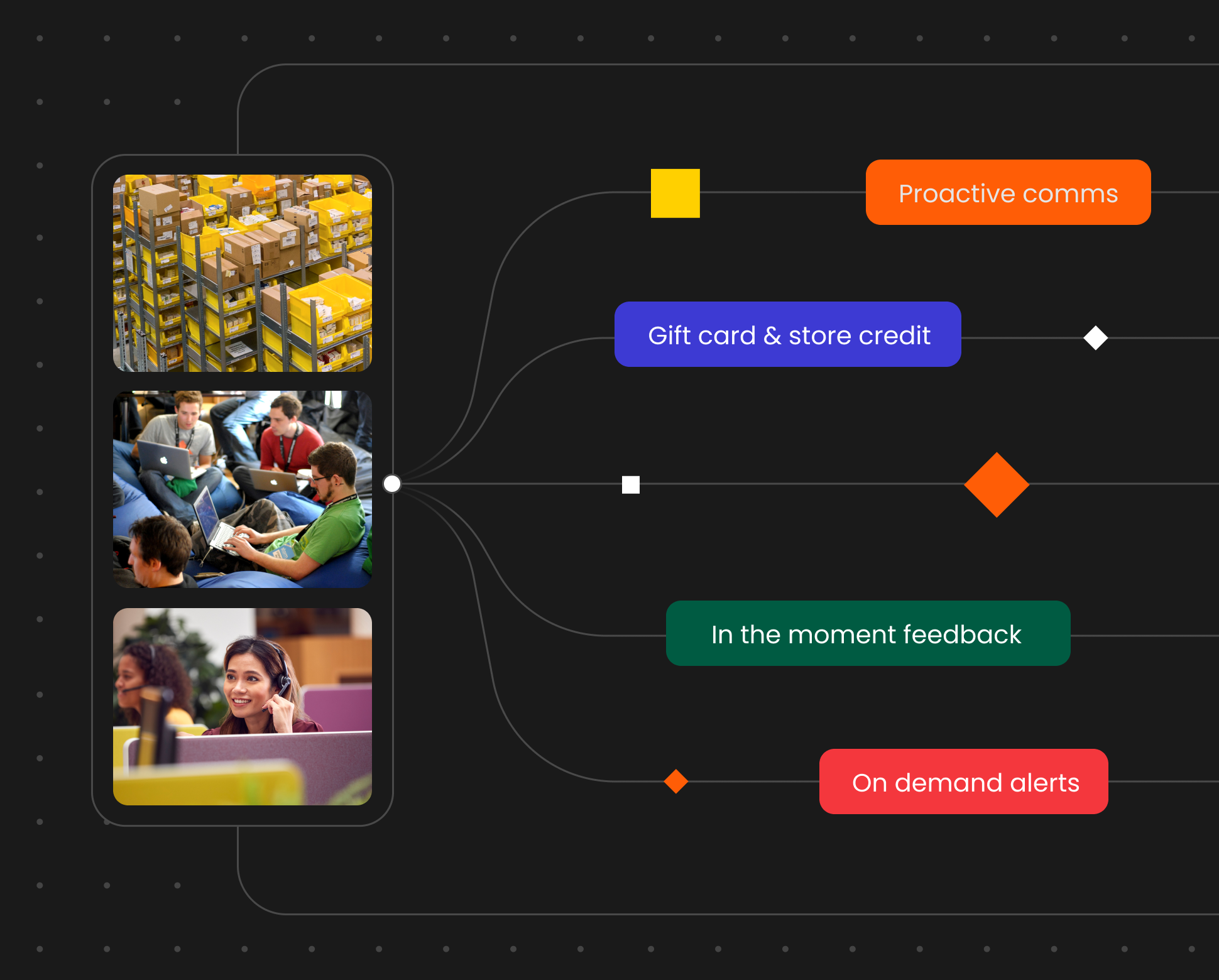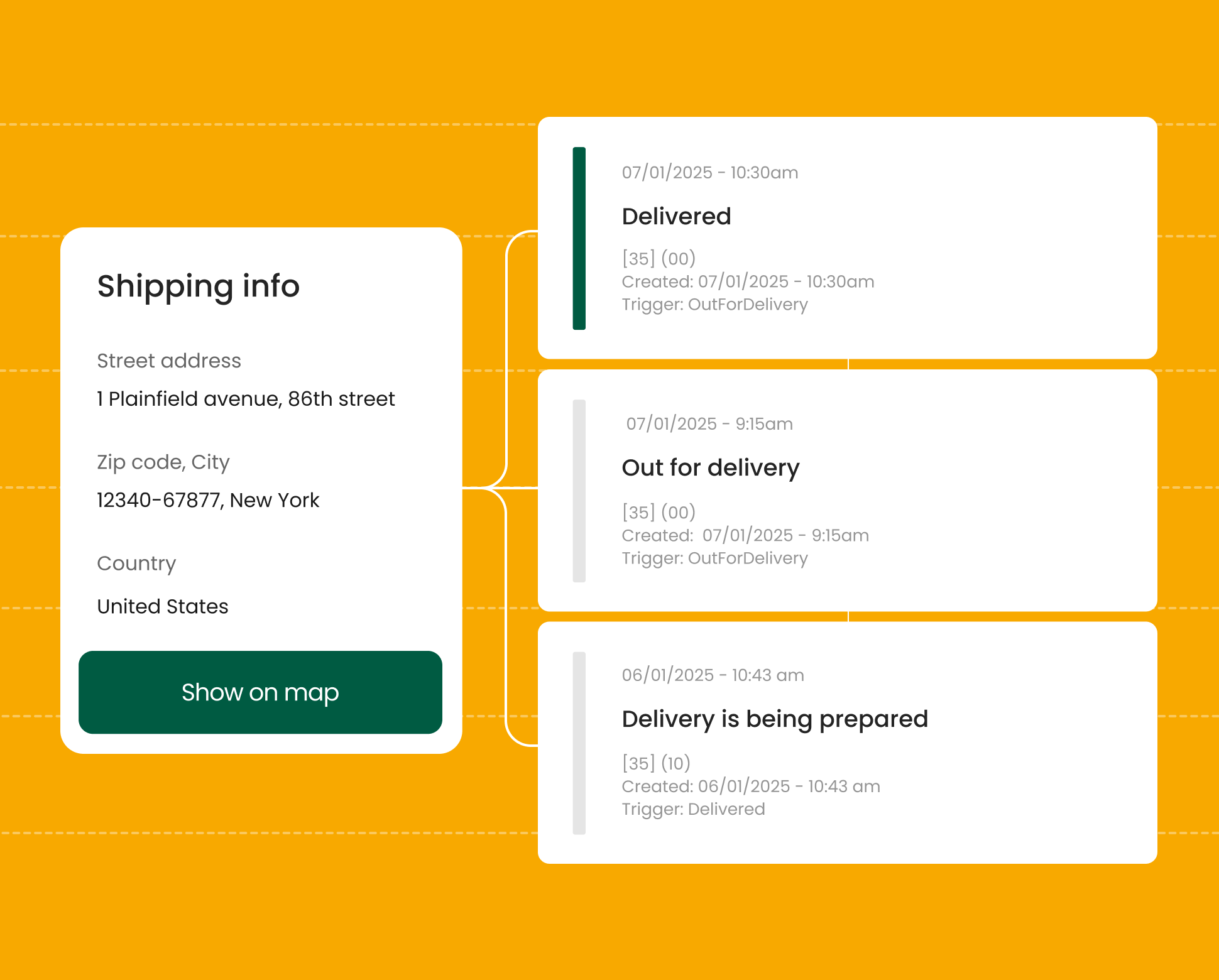AfterShip vs parcelLab: Which Platform is Best for Ecommerce?
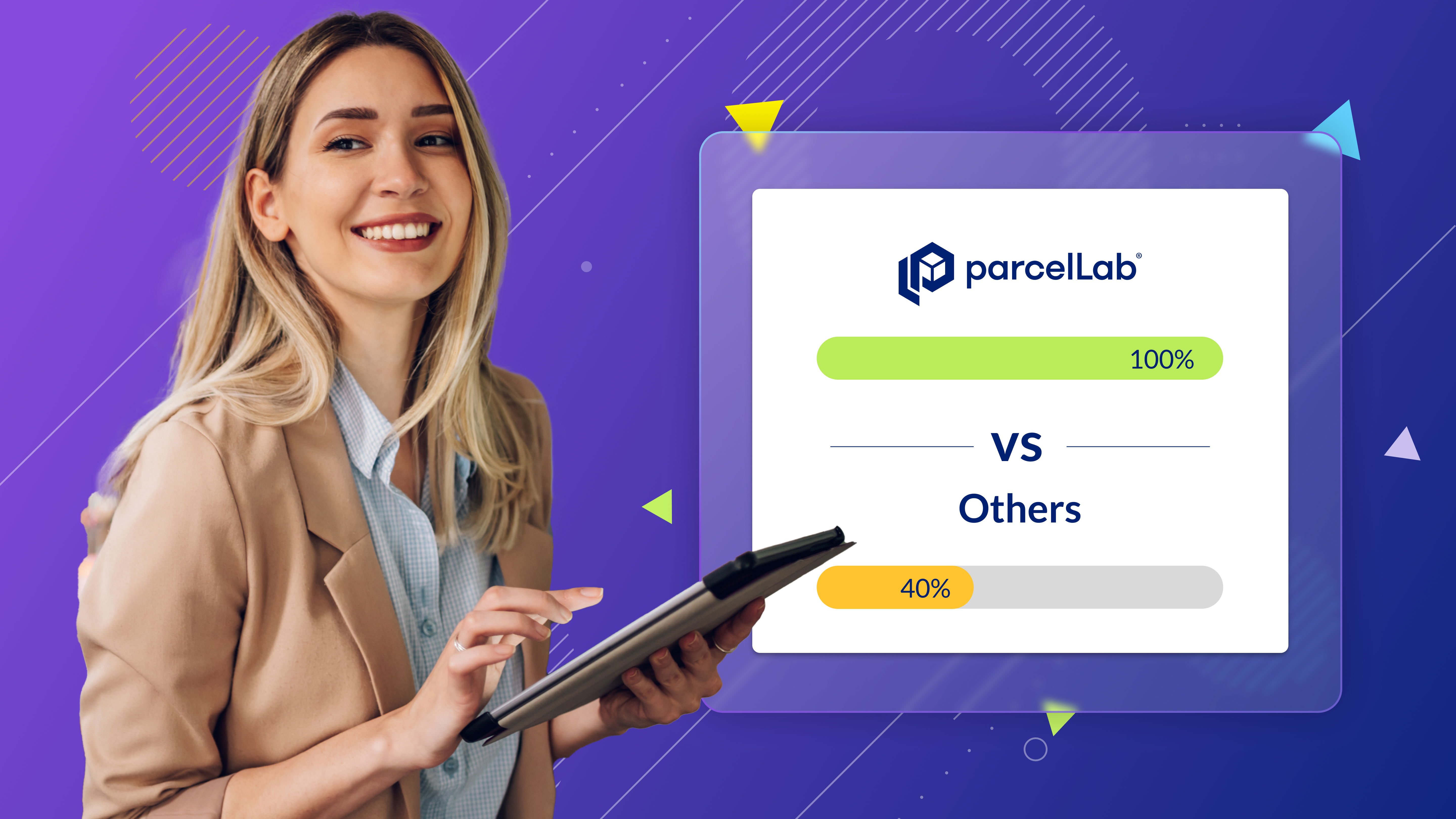
Contents
- AfterShip vs parcelLab: Platforms overview and unique features
- Implementation comparison: how long does onboarding take?
- Customer communications comparison: What do notifications look like?
- Branding and package tracking comparison: how do the AfterShip tracking pages compare to parcelLab?
- Returns: how do you manage returns with parcelLab vs AfterShip?
- Data and delivery estimates comparison: who does better parcel tracking?
- Customer service: what are AfterShip and parcelLab's support offerings?
- AfterShip Pricing vs parcelLab Pricing: how much do brands pay?
- Conclusion
AfterShip vs parcelLab: Platforms overview and unique features
As two of the most popular solutions in the market, parcelLab and AfterShip have capabilities that facilitate the post-purchase experience, including customer comms, order notifications, and more.
However, they also have fundamental differences, particularly in the areas of customer support, data quality, and pricing structures.
parcelLab overview
parcelLab is a cloud-based post-purchase experience platform that helps brands improve customer engagement and retention by providing personalized and branded communication throughout the customer journey.
The platform offers a range of features, including shipment tracking, , personalized messaging, and customer feedback management to enhance the post-purchase experience and build customer loyalty.
In addition, parcelLab has direct integrations with leading carriers, allowing you to deliver timely and accurate shipment information to your customers.
With offices in Boston, Munich, London, and Paris, parcelLab’s team is well-equipped to support customers globally. Some of parcelLab’s key customers are Yeti, Bose, LIDL, and H&M, among many others.
AfterShip overview
AfterShip is a platform that allows businesses to manage post-purchase processes and customer communications. The solution offers shipment monitoring and more.
Additionally, AfterShip has shipping management capabilities, which include label generation, rate calculators, and more.
Headquartered in Singapore, AfterShip also has offices in Austin, Toronto, Barcelona, India, Shenzhen, and Hong Kong. Notable customers include TOMS, Gymshark, and Aesop.
Implementation comparison: how long does onboarding take?
parcelLab implementation
parcelLab’s policy is to get brands up and running on the platform within 30 days or less. For most users, the process takes about two weeks.
During this time, parcelLab will work with your team to:
- Set up data transfer, including carrier data
- Add your brand to the parcelLab platform
- Iron out what events will trigger customer comms
- Design and create shipping notifications, including adding marketing elements to your messages
- Create and design your order tracking page
- Set up portal accounts
- Test everything
- Go live
It’s important to note that many of these steps are handled by parcelLab’s team, and we strive to minimize the work required on the retailer’s side.
AfterShip description
AfterShip provides onboarding options for various business sizes, including self-serve and support teams.
Your specific actions will depend on the features and integrations you’re using. For instance, if you’re on Shopify, the first step is to install the add-on to your store. If you’re using PrestaShop, you’ll need to download the AfterShip zip file and install it as a module.
From there, you’ll set up your shipping workflows, tracking pages, notifications, etc. The steps will vary depending on the software and platforms you’re using, so refer to AfterShip’s support center to determine the process for your business.
As for how long it’ll take to get up and running depends on how quickly you install and set up the solution. If you have a simple webshop, the process can take a day or so. However, if you have limited time or complex workflows, the setup process may take longer.
Customer communications comparison: What do notifications look like?
Sending order notifications and shipping updates helps manage customer expectations, reducing inquiries—and, when done right—can even drive traffic and sales. So, how do parcelLab and AfterShip facilitate the customer communication process? Let’s take a look below.
parcelLab order notifications
In addition to email notifications, parcelLab supports multiple communication channels, including SMS, mobile apps, and instant messaging software like WhatsApp, Messenger, and Line.
You can configure the system to send trigger notifications for various events, from production and order updates to shipment, delivery, and returns. parcelLab has over 50 email triggers, which means you can keep shoppers in the loop at every stage.
As for the look and feel of your emails, parcelLab’s solution is 100% white labeled and customizable. You can design your emails to your exact specifications and requirements, so everything is entirely on brand.
parcelLab makes it easy to weave marketing elements into your messages, thus making it simple to serve personalized product recommendations and upsells.
parcelLab also sends email notifications from your domain so customers see your branding all throughout.
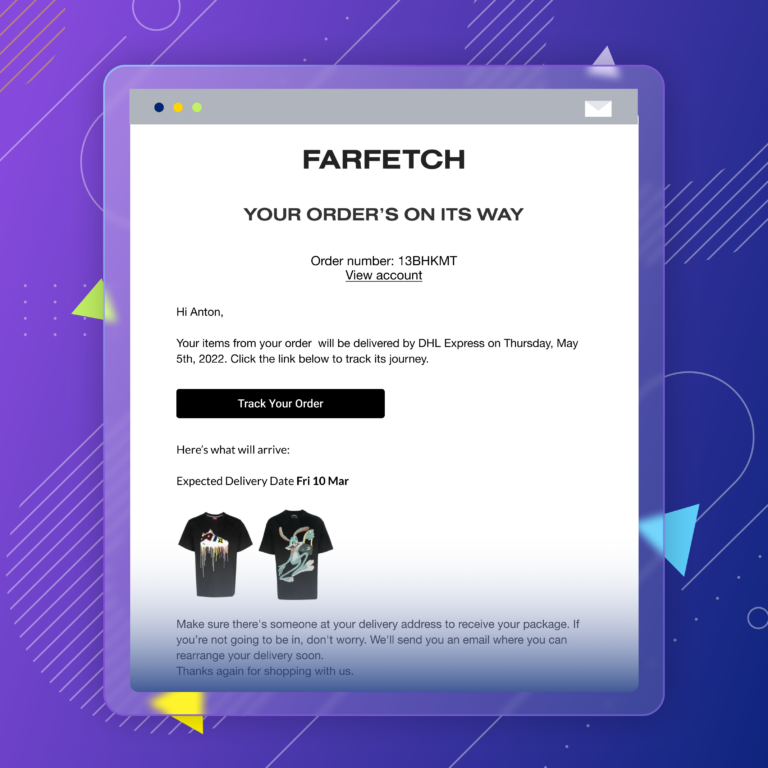
AfterShip order notifications
AfterShip supports email and SMS notifications. Regarding the design of your message, AfterShip has an email editor that lets you customize elements like the email header, body, footer, and more.
![]()
Branding and package tracking comparison: how do the AfterShip tracking pages compare to parcelLab?
Both parcelLab and AfterShip allow you to create order tracking pages, though there are some major differences around design and web hosting.
parcelLab’s branded tracking pages: Overview
Like with order notification emails, parcelLab offers a fully white labeled and tailored order tracking page. You can customize every page component to fit your style and needs.
In addition, the page is hosted on your domain, which means you’re sending users back to your website (3 out of 4 users return) when they view their tracking numbers and the status of their orders. This paves the way for additional traffic and sales.
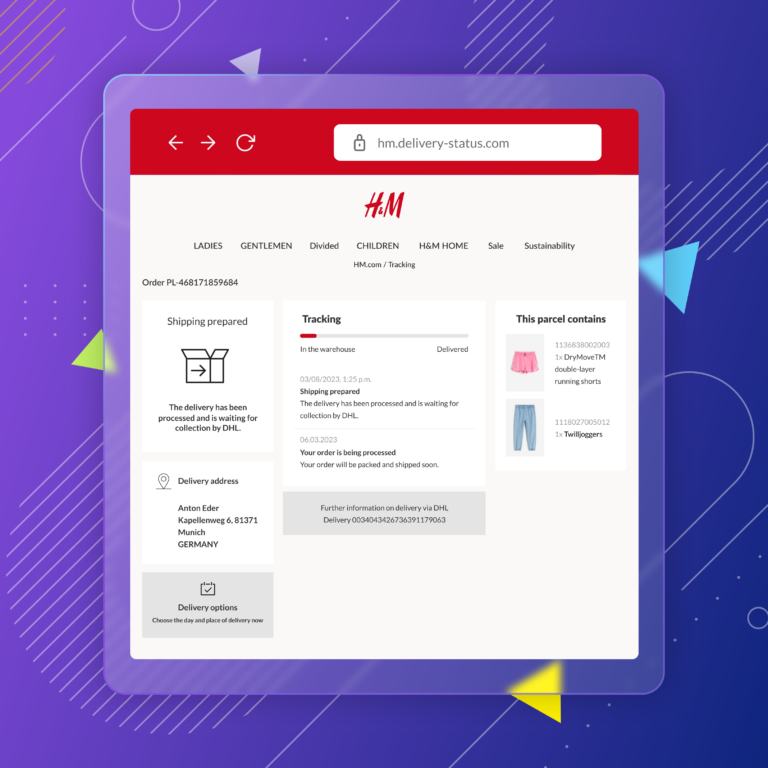
AfterShip order tracking page
Like with its email editor, AfterShip’s order tracking page can be implemented using a self-service tool. AfterShip’s branded package tracking page enables you to customize fonts and colors, along with some of the page’s content (e.g., header and footer).
AfterShip Tracking offers a variety of themes and templates. It also provides options for page customization, including the potential for using a personal URL.
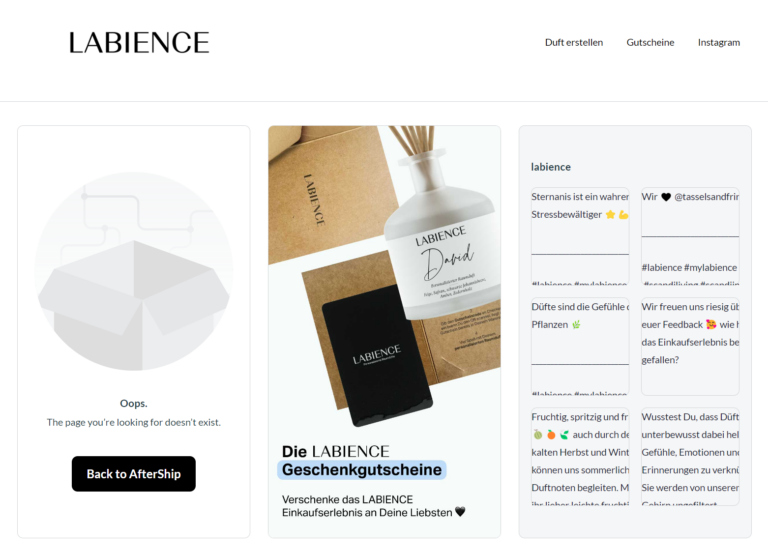
AfterShip also offers a white label domain feature to set up a custom domain for your tracking page.
Returns: how do you manage returns with parcelLab vs AfterShip?
| parcelLab | AfterShip |
|---|---|
| Flexible, fully customizable, and 100% white labeled; no mention of parcelLab in any part of the digital returns portal Pages are hosted on the brand’s domain | Branded and customizable digital returns portal Pages seem to be hosted on AfterShip’s domain |
Now let’s compare parcelLab and AfterShip’s return management capabilities. Here’s a look at each solution’s key features and offerings.
parcelLab
parcelLab offers a digital returns portal that lets you set up a returns flow where customers can select items to return, share reasons for sending them back, and print their return labels. You have the option of adding QR codes to return labels to streamline the process further. With parcelLab, your returns portal is hosted on your website and is fully customizable.
You can also extend the coverage of your returns through parcelLab’s network of partners.
parcelLab’s built-in returns communication capabilities allow you to manage the entire post-purchase process (from shipment to returns) on a single platform. This also gives you more visibility into product returns data.
AfterShip
AfterShip’s returns management capabilities are pretty strong. You can set up a digital returns portal to facilitate returns and exchanges. A unique feature of AfterShip is incentivized exchanges, which encourage shoppers to exchange items rather than ask for refunds.
In the event of a refund, AfterShip has proactive notifications to keep customers informed on the status of their returns.
Data and delivery estimates comparison: who does better parcel tracking?
| parcelLab | AfterShip |
|---|---|
| Direct API integrations with 350+ carriers Near real-time order updates | Supports 1,000+ carriers, some not through a direct integration For some carriers data may lead to delays and discrepancies |
Providing customers with accurate and transparent shipping updates is essential to their post-purchase experience. Let’s see how parcelLab and AfterShip compare.
parcelLab
parcelLab’s direct integration with over 350 carriers enables brands to provide nearly real-time updates on order shipments. This makes it easier to manage expectations and reduces WISMO inquiries. With timely order updates, shoppers have a better idea of when to expect their packages and are less likely to contact customer support.
AfterShip
While AfterShip technically supports more carriers (1,053, according to the company’s website), the platform’s data quality may not measure up to parcelLab. Some customers have reported difficulties getting accurate carrier data with AfterShip.
Customer service: what are AfterShip and parcelLab’s support offerings?
Customer support is one of the biggest areas where AfterShip and parcelLab differ. While the former is big on self-service tools, the latter favors a customized customer support experience.
parcelLab’s customer support
parcelLab delivers prompt and efficient customer service to teams throughout the United States and Europe.
Instead of simply being a vendor, parcelLab strives to be a post-purchase experience partner for brands. Case in point: the parcelLab team collaborates closely with users to resolve problems and actively seeks out opportunities to enhance their accounts.
According to one customer, “They are by far the most proactive success and technical team I have worked with and it seems like they are always offering ways for us to improve that we hadn’t even identified ourselves.”
Another user commends parcelLab’s “Good service team that provides swift support for implementation.”
AfterShip’s customer support
While a self-service tool is ideal for those who prefer a DIY route in their post-purchase programs, this model leaves much to be desired around customer support. Unlike parcelLab, which has dedicated account management and support, AfterShip users must rely heavily on the platform’ Help Center.
24/7 support is technically available but only via live chat and email.
A handful of customers have reported issues with AfterShip’s support team.
“Their customer support team keep saying ‘we have already forwarded the concern to our development team and waiting for the response now,'” reports one user
Another reviewer writes, “There are some helpful people on chat support, but sometimes you see yourself talking with people who understand lesser the app than you do.”
AfterShip Pricing vs parcelLab Pricing: how much do brands pay?
What are the costs of using AfterShip and parcelLab? Have a look at each solution’s pricing info below.
parcelLab
The pricing for using parcelLab varies based on the desired capabilities and the number of shipments and users on the platform. To simplify pricing, parcelLab provides packages that contain a fixed set of features. These packages include:
Convert
- parcelLab Promise
Engage
- parcelLab Track & Communicate
- parcelLab Service
- parcelLab Campaign Manager
Retain
- parcelLab Returns
Platform
- parcelLab Insights
- parcelLab Connect
- parcelLab Security
parcelLab can also tailor its pricing based on each company’s pain points, needs, and post-purchase objectives.
AfterShip
AfterShip has four pricing tiers, including:
- Essentials – starting at $11 per month for 100 shipments
- Includes features like a customizable tracking page, email notifications, and SMS notifications (for an added fee)
- Pro – starting at $119 per month for 2,000 shipments
- Includes everything in the Essential plan, plus tracking API and webhooks, customer surveys, product recommendations widgets, etc.
- Premium – starting at $199 per month for 2,000 shipments
- Includes everything in the two plans above, plus advanced email triggers, delivery date prediction, and the option to remove AfterShip branding
- Enterprise – a customized plan for 300.000+ labels per year
- Aftership’s enterprise plan is typically all-inclusive
AfterShip’s starting prices are cost-effective; however, it’s worth noting that the solution comes with additional fees when you want to expand its capabilities for its public plans.
For instance, if you need to bring your team on board, AfterShip charges $10 per member per month. Need access to priority customer service with faster response times and developer support? AfterShip adds 20% to 30% to your subscription fee.
These costs can add up, so run the numbers to determine how much you’ll pay per month.
Conclusion
Both parcelLab and AfterShip offer unique benefits that cater to different business needs. parcelLab is a premium platform that provides high-touch support and advanced tools, making it an excellent choice for large and enterprise brands that prioritize a personalized experience.
On the other hand, AfterShip is more affordable and self-serve, so it’s better suited for smaller brands with basic workflows.
Ultimately, the right decision depends on your needs and priorities. If you’re considering parcelLab, book a demo with us, and we’ll give you a tour of the software.
